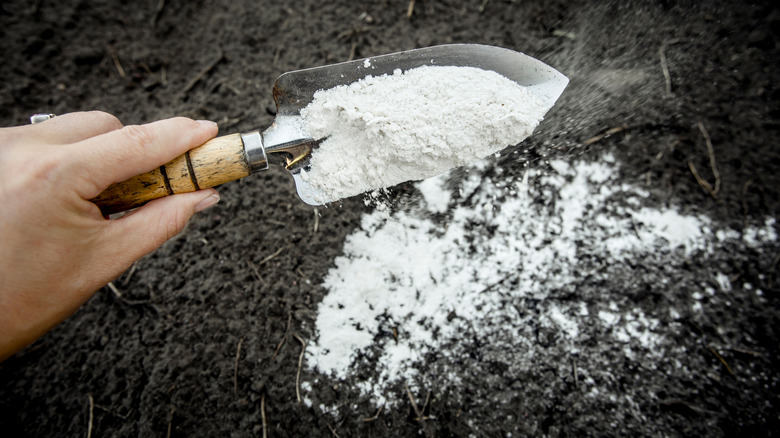The Affordable Ingredient To Add To The Garden In Fall For Healthier Soil Throughout Winter
When fall comes, most gardeners are busy readying the garden for winter by removing dead and diseased branches, raking leaves, and winterizing tools. Another step that can sometimes be forgotten is getting your soil in good shape for the next growing season. If you have done a soil test and find that your garden soil is acidic, sprinkle this unexpected ingredient in your garden and watch your plants thrive. The "unexpected ingredient" that can really make a difference for your plants is lime. It's very affordable, costing around $2 to $3 per pound from places like Walmart. Liming your garden soil helps to raise the acidity so the plants can reap the benefits from the calcium, potassium, and phosphorus that are already present. When the soil is acidic, plants have a harder time getting all the benefits from those nutrients. Keep in mind that adding lime should only be done on acidic soil and only after you have tested it first and found the pH levels to be below 5.5.
Lime is one of several additions that can boost the health and productivity of your garden soil and can really make a difference in the health of your plants. Applying lime in the fall, right after the last harvest, and when the growing season has ended, allows it plenty of time to get worked down into the soil and adjust the pH levels before planting season begins again. There are two types of lime that are used on gardens and lawns: Dolomite lime and agricultural lime, also known as garden lime. Not all lime is good for gardens and garden soil, so make sure to only use one of these two types.
Additional benefits to adding lime and how to apply it properly
While lime is not the only way to amend the soil in fall for a healthy garden next spring, it provides several additional benefits. One such benefit is improving water penetration in clay soil. This happens when the lime helps to break up the larger particles, making it easier for the water to penetrate. In turn, it means that your plants will be hydrated properly as well when the growing season gets underway. As lime helps to improve the soil structure, it allows more air pockets to form. Aerated soil is much better for your plants, providing crucial oxygen for tiny microorganisms and the roots of the plants, both of which are important for plant health.
The best way to apply lime to the soil is to spread it over the surface, ensuring that it is spread as evenly as possible, and then mixing it into the top 4 to 6 inches with a tiller or steel garden rake. A little deeper than 6 inches is fine too. It is important to wear gloves, goggles, and a mask while you are spreading the lime to prevent you from inhaling particles or getting lime in your eyes. When mixing the lime into the soil, you need something sturdy and strong that will get down into the soil and mix the lime in to the recommended depth, which is within the normal root zone of plants. After spreading and mixing the lime, water your garden soil well to get the lime working. You can reapply lime to your soil every 3 to 5 years to get the maximum benefits and keep your soil in excellent condition.

